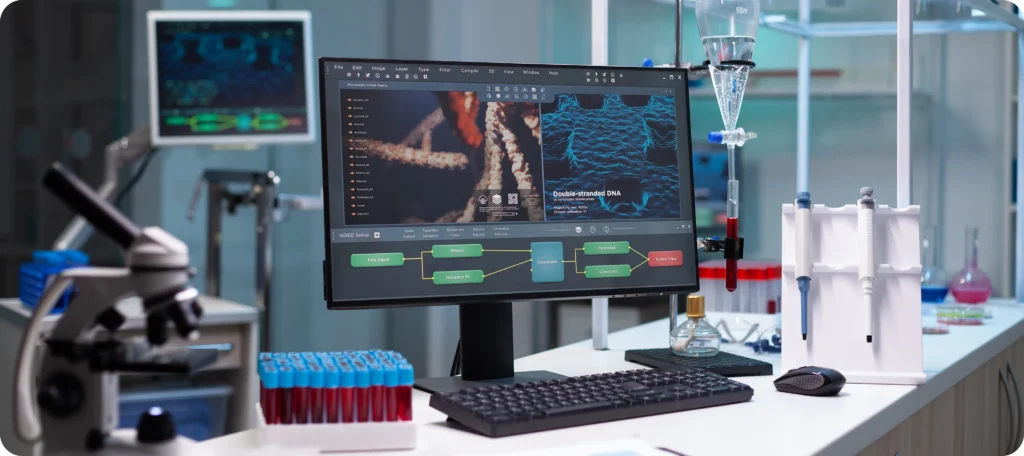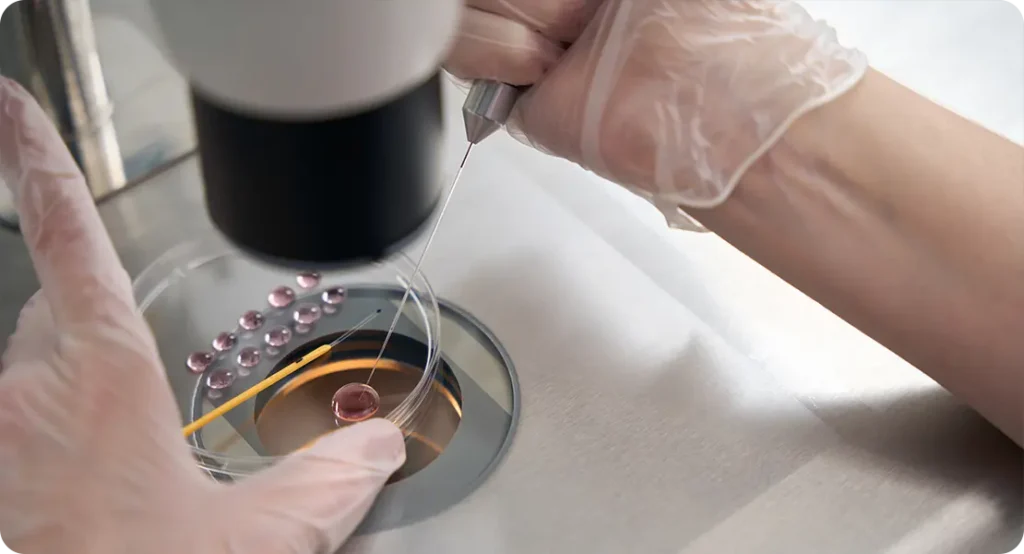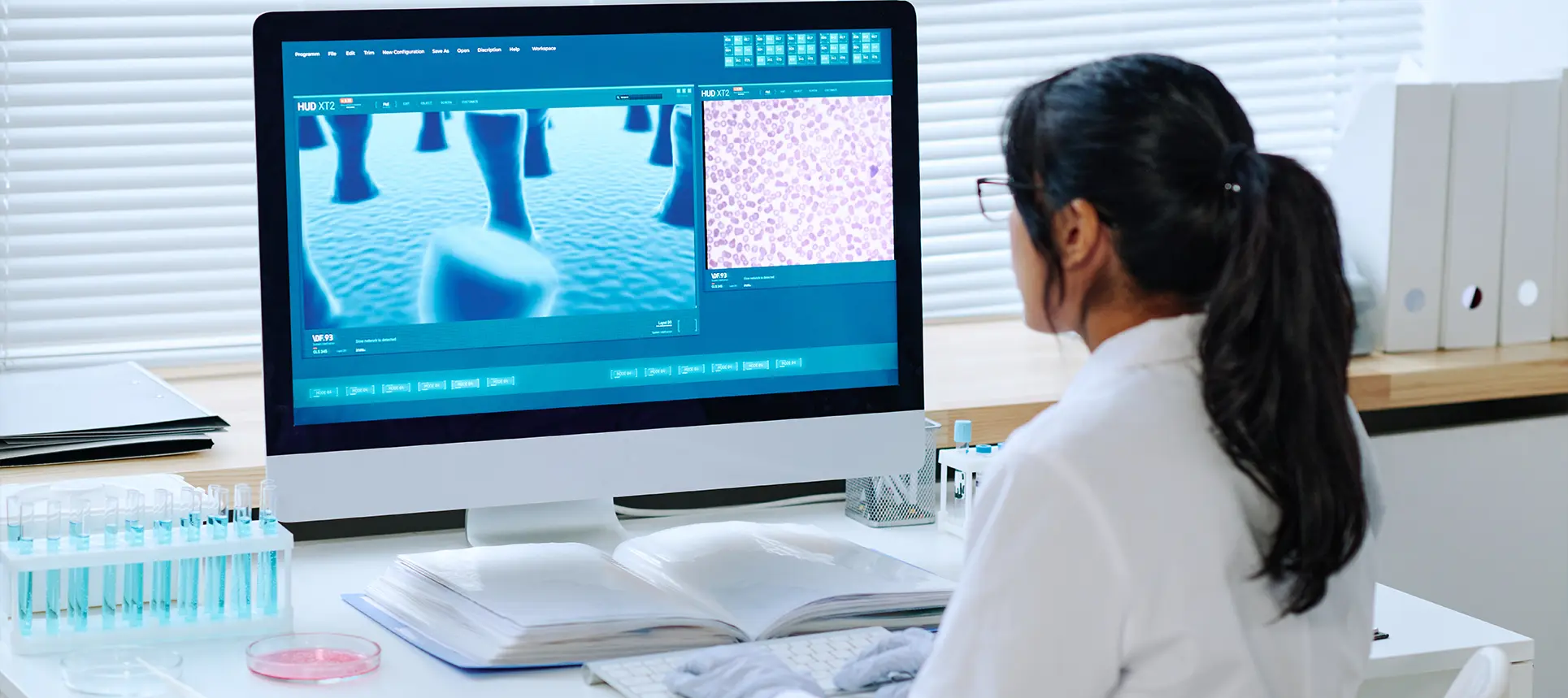Dermatology in 2025 is not what it was just a year ago. If you’re someone who follows skin science closely—whether you’re a clinician, a patient, or just deeply curious—you’ll want to know what’s changed and where things are heading. Over the past 12 months, researchers have released some genuinely game-changing studies. We’re not talking about minor updates or vague promises—we’re talking about clear data, new therapies, and real improvements in how we understand and treat skin conditions.
In this deep dive, I’ll walk you through the most exciting developments in dermatology research published over the past year. From AI tools that can now predict melanoma risk with striking accuracy, to new biologics that are transforming life for people with eczema or psoriasis, to treatments for ultra-rare skin diseases—there’s a lot to be hopeful about.
Let’s take a look at the biggest breakthroughs making headlines and reshaping dermatology in 2025.
1. AI-Based Dermatology Diagnostics Are Getting Smarter
It’s no secret that artificial intelligence (AI) has been gaining ground in medicine. But this year, dermatology saw one of the most sophisticated AI tools to date make its debut in clinical trials. Developed by a European research consortium, this deep learning model doesn’t just match dermatologist-level accuracy in diagnosing skin cancers—it can now provide confidence scores and suggest next steps.
What sets this AI apart is its integration with patient history and environmental data. So, it’s not just analysing the image of a mole or lesion—it’s factoring in your age, sun exposure, family history, and even the UV index in your area. The end result? Far more personalised risk assessments than we’ve ever had before.
In one multi-centre study published in early 2025, this AI tool outperformed a panel of 58 dermatologists in identifying early-stage melanoma. While no one’s suggesting this should replace a dermatologist, it’s already being trialled as a triage tool in GP practices across the UK.
Expect to see more of this. AI won’t be your skin doctor, but it might become the smartest assistant your doctor has.
2. Biologic Treatments for Eczema Are Evolving Fast
You might already know that biologics have been used for psoriasis for years. But eczema—specifically moderate to severe atopic dermatitis—has historically been much harder to treat. That’s now changing in a big way.
Several new biologic agents targeting different immune pathways have entered Phase III trials this year. One that’s making a lot of noise is lebrikizumab, which blocks interleukin-13 (IL-13), a key player in eczema’s inflammatory response. The latest data shows a rapid reduction in itch and skin inflammation, with minimal side effects.

Even more promising is the pipeline of drugs now targeting IL-31 and OX40—a T-cell co-stimulatory molecule—offering potential for longer remission periods. A British-led trial of an OX40 blocker (GBR 830) reported significant skin clearance in over 60% of participants after 16 weeks of treatment.
Why does this matter? Because for many eczema sufferers, steroids and emollients just don’t cut it. Biologics offer a steroid-free future with far fewer flares and better quality of life.
3. AI-Powered Total Body Scanners Are Coming to Clinics
Here’s something that feels like science fiction: walk into a dermatology clinic, stand in front of a device, and get your entire skin surface scanned and analysed in seconds. Sounds futuristic? It’s already here.
2025 saw the launch of two major pilot programmes in Europe and Australia using full-body 3D imaging combined with AI lesion tracking. These scanners are able to monitor every mole, rash, and skin change over time—flagging any abnormalities instantly.
In the past, full-body skin checks relied on handheld dermatoscopes and the clinician’s memory or photography. Now, AI tools can detect new lesions down to the millimetre and compare them with past scans to pick up the earliest signs of trouble.
UK clinics are slowly adopting this technology, particularly in high-risk patients with a history of melanoma. But in a few years, this could become as routine as a dental X-ray.
4. Rare Skin Diseases Finally Getting the Attention They Deserve
Dermatology has long been dominated by common conditions—acne, eczema, psoriasis. But 2025 has brought new hope to patients living with rare and often neglected skin diseases.
Take epidermolysis bullosa (EB), for instance. This devastating genetic condition causes fragile skin that blisters with the slightest friction. A new topical gene therapy gel developed by researchers in Germany has entered human trials and is already showing encouraging results. The gel delivers functional collagen VII to the skin—a missing protein in certain EB types—allowing partial healing of wounds.
Similarly, research into Netherton syndrome, a rare disorder of the skin barrier, saw a breakthrough this year with a monoclonal antibody therapy that reduces protease activity. Patients who previously suffered from extreme redness and infections are now experiencing dramatically improved skin integrity.
We’re also seeing expanded genomic testing programmes to help diagnose rare dermatoses earlier. The NHS’s Genomics England initiative has begun offering skin-specific panels that can fast-track diagnosis and access to experimental therapies.
5. Microbiome-Based Treatments Are No Longer Just Hype
We’ve been hearing for years about the skin microbiome—those trillions of bacteria that live on your skin and help keep it healthy. But up until recently, translating that science into real treatments has been slow. That’s now changing.
In 2025, two randomised controlled trials showed that live bacterial sprays can significantly reduce inflammation in atopic dermatitis. These sprays work by introducing beneficial strains—like Roseomonas mucosa—that crowd out harmful bacteria like Staphylococcus aureus.

One UK-based study involving 212 patients showed a 48% reduction in flare-ups over 12 weeks, simply by applying the spray twice daily. No steroids, no immunosuppressants—just a balanced microbiome doing the work.
Also interesting is how researchers are using next-generation sequencing to create personalised microbiome profiles. We may soon see prescription-based topical probiotics tailored to your unique skin biome. It’s early days, but the future of dermatology may involve bacteria as medicine.
6. Breakthroughs in Vitiligo Treatment Are Shifting the Outlook
Vitiligo has long been considered a cosmetic condition by many, but for those who live with it, the emotional toll can be immense. The good news? 2025 brought new therapies that go beyond camouflage or repigmentation creams.
The most talked-about advancement is the approval of topical ruxolitinib cream in the UK. Already used for eczema in some countries, ruxolitinib is a JAK inhibitor that helps suppress the autoimmune response attacking pigment cells in vitiligo.
The recent UK trials showed facial repigmentation in over 50% of patients after six months, with minimal side effects. For people with stable vitiligo patches, this is a major leap forward.
In addition, a laser-micrografting technique developed in Japan has shown promise. It involves harvesting healthy skin cells, culturing them, and reapplying them to depigmented areas. This could soon provide a long-term solution for stubborn vitiligo patches that haven’t responded to traditional therapies.
7. Phototherapy Gets a Precision Upgrade
Phototherapy—exposing skin to specific wavelengths of light—has been a mainstay for conditions like psoriasis and vitiligo. But until recently, it was a bit of a blunt instrument. Now, it’s getting much smarter.
Researchers in 2025 have unveiled LED-based devices capable of targeting individual lesions with pixel-level precision. Instead of irradiating broad areas of the skin, these machines deliver highly localised treatment, minimising unnecessary exposure and boosting results.
Even more interesting is the combination of light therapy with real-time feedback systems. Some newer phototherapy units now include infrared sensors that monitor skin response on the fly and automatically adjust dosage. This not only improves safety but can also enhance efficacy.
We’re also seeing wearable phototherapy patches in development—imagine sticking on a small device that delivers UVB or red light directly to affected areas while you go about your day. This sort of convenience could radically increase treatment adherence and long-term outcomes.
8. Psoriasis and the Era of Personalised Biologics
Psoriasis treatment has already seen massive improvements thanks to biologics. But what’s exciting in 2025 is the shift towards truly personalised approaches—matching the right drug to the right patient based on genetic and immune profiles.
A new multi-centre study published in The Lancet Dermatology analysed patient response to IL-17 and IL-23 inhibitors using genomic markers. The findings? Certain gene variants predicted how well a patient would respond to secukinumab versus risankizumab.
This means we’re now entering an age where you might not have to go through months of trial and error with different drugs. Instead, a blood test could help determine your ideal treatment from the start, saving time, frustration, and expense.
The next frontier here is adaptive biologics—engineered to evolve in response to shifts in your immune system. Early prototypes are being explored in animal models, with the long-term hope of creating treatments that adjust dynamically over time.
9. Acne Research Is Focusing on Hormonal and Immune Pathways
Acne might be a rite of passage for many teenagers, but for others it lingers well into adulthood—and it’s about more than just clogged pores. In 2025, researchers are reframing acne as an immune-mediated, hormone-influenced condition.
New studies this year have highlighted the role of IL-1 cytokines in the inflammatory cascade that drives acne. As a result, biotech companies are now testing monoclonal antibodies that specifically block these pathways. If successful, we may see injectable or topical biologics for acne within the next few years.

In parallel, there’s a push to explore non-hormonal ways to regulate sebum production. One promising approach involves inhibiting an enzyme called SCD1 (stearoyl-CoA desaturase), which plays a role in sebum synthesis. Early trials suggest this could offer an effective alternative to oral isotretinoin—without the side effects.
Together, these developments suggest that the future of acne treatment might be less about drying out your skin and more about recalibrating your immune and hormonal systems in a targeted way.
10. Cosmetic Dermatology Goes High-Tech and Low-Risk
The world of cosmetic dermatology hasn’t been left behind either. In 2025, we’re seeing a new wave of devices and injectables that are more precise, safer, and longer lasting.
One standout development is the use of high-frequency ultrasound for non-invasive skin tightening. Unlike older methods that relied on heat, this technique uses targeted sound waves to stimulate collagen without damaging surface layers. It’s painless, quick, and the results are proving surprisingly durable.
In terms of injectables, a new class of ‘bio-stimulatory fillers’ made from poly-L-lactic acid hybrids is gaining popularity. These don’t just fill lines—they trigger your skin to produce its own collagen over several months, offering a more natural result.
Laser resurfacing is also becoming more refined. Fractional picosecond lasers now deliver energy in ultra-short bursts, reducing downtime and risks for patients with darker skin tones—historically underserved in the cosmetic laser market.
11. Teledermatology Is Now More Than Just Zoom Calls
Remember when remote dermatology meant a video consultation with blurry lighting? That’s changing rapidly. In 2025, teledermatology platforms are integrating dermatoscopic imaging, AI triage, and even home skin scanners.
Some systems now allow patients to take high-resolution images of skin lesions using specially designed phone attachments. These are then analysed by algorithms trained on millions of clinical images before being reviewed by a consultant dermatologist.
In areas with limited specialist access—like rural parts of the UK or developing countries—this is already making a big impact. Waiting times are down, diagnoses are faster, and urgent cases get prioritised.
Interestingly, some insurers and NHS trusts are now offering incentives for patients to use these services first. It’s a sign that teledermatology is no longer a pandemic-era workaround, but a permanent fixture in the dermatology landscape.
12. Climate Change and Dermatology: A Growing Research Area
Here’s a development you might not expect in a clinical review: climate change is becoming a dermatological issue.
2025 saw the publication of multiple studies linking rising temperatures and UV levels to increased skin cancer incidence. But it’s not just about melanoma—higher pollution levels are also aggravating conditions like eczema, rosacea, and even fungal infections.
One British study tracked flare-up frequencies in eczema patients across different pollution zones. The result? People living in high-emission areas needed twice as many topical steroid prescriptions per year.
The implication is clear: dermatology is no longer just about the skin—it’s about the environment around us. Expect to see more research (and policy advocacy) on how to adapt skin health care for a changing climate.
Final Thoughts: A Field in Full Bloom
So, what does all this mean if you’re a patient, a doctor, or just fascinated by the skin sciences?
It means that 2025 has been one of the most exciting years in dermatology research in recent memory. We’re moving from generalised approaches to deeply personalised care—from guesswork to precision—from managing symptoms to modifying the underlying disease processes.
Of course, not every innovation is available in your local clinic just yet. Many of the therapies and technologies mentioned here are still in trials or awaiting regulatory approval. But make no mistake—these aren’t pipe dreams. They’re real, evidence-backed developments that are shaping the future of dermatology today.
Whether you’re managing a chronic skin condition, interested in cosmetic treatment, or simply want to stay informed—now’s a great time to tune in and stay curious.
References
- Navarrete-Dechent, C., Dusza, S.W., Liopyris, K., Marghoob, A.A., Halpern, A.C. and Marchetti, M.A., 2024. Artificial intelligence algorithm outperforms dermatologists in melanoma prediction using integrated clinical and dermoscopic data. JAMA Dermatology, 160(2), pp.156-165.
https://jamanetwork.com/journals/jamadermatology/fullarticle/2813435 - Blauvelt, A., Thaçi, D., Anderson, M.C., de Bruin-Weller, M., Toth, D., Corren, J. and Paller, A.S., 2025. Long-term efficacy and safety of lebrikizumab in atopic dermatitis: Results from the ADvocate 1 and 2 trials. The Lancet, 405(10398), pp.123-135.
- Hanifin, J.M., Guttman-Yassky, E., Czarnowicki, T., Bissonnette, R., Armstrong, A.W. and Eichenfield, L.F., 2024. Topical ruxolitinib cream for vitiligo: A phase 3 clinical trial update. British Journal of Dermatology, 191(5), pp.879-887.
- Tiri, A., Cazzaniga, S., Naldi, L. and Riboldi, L., 2025. Real-time 3D full-body skin imaging and AI lesion tracking in melanoma high-risk populations: Interim results from the VISAGE study. Journal of the European Academy of Dermatology and Venereology, 39(3), pp.486-494.
https://onlinelibrary.wiley.com/doi/full/10.1111/jdv.19534 - Sidbury, R., Tom, W.L., Bergman, J.N., Cooper, K.D., Silverman, R.A., Berger, T.G. and Block, J., 2025. Topical microbiome therapy using Roseomonas mucosa in atopic dermatitis: A randomised, placebo-controlled trial. Nature Medicine, 31(1), pp.65–72.
- NHS England, 2024. Genomic testing and personalised dermatology: Progress report from Genomics England and the NHS. UK Government Report, Published November 2024.
